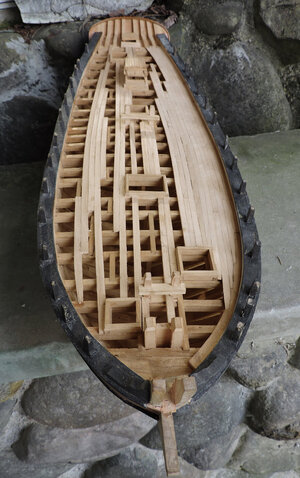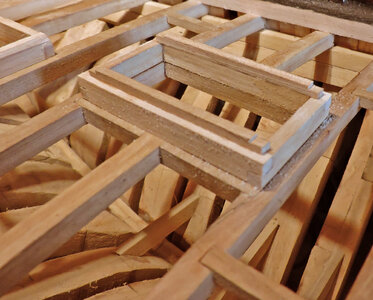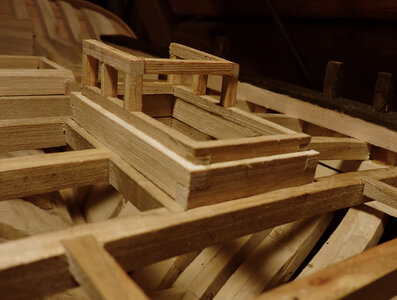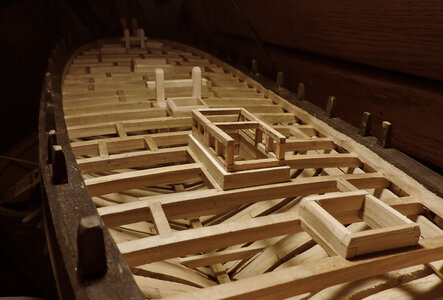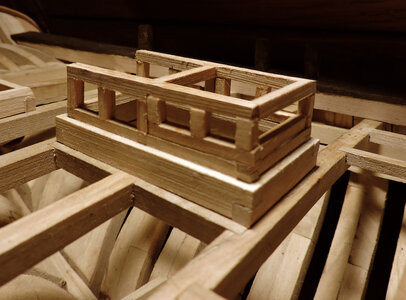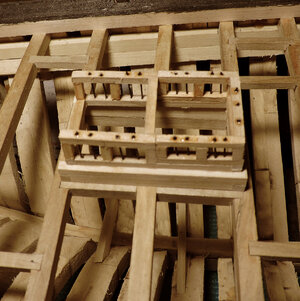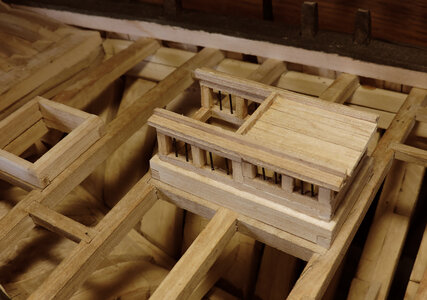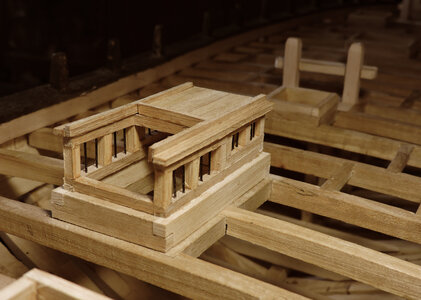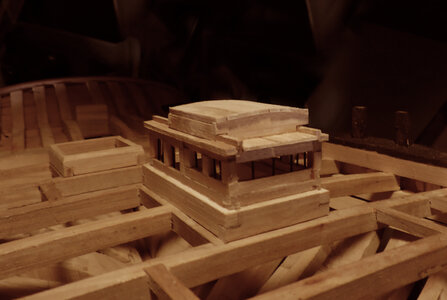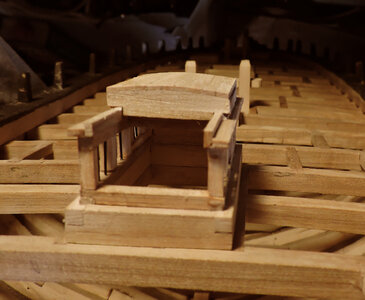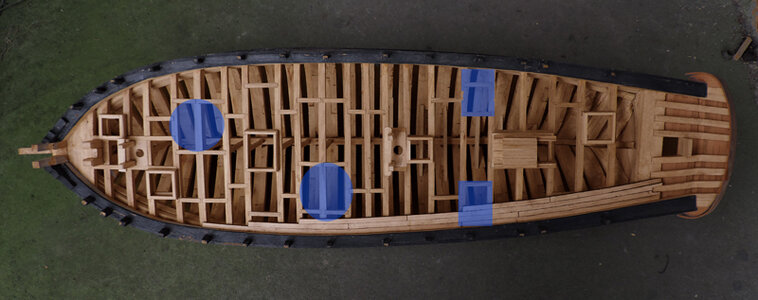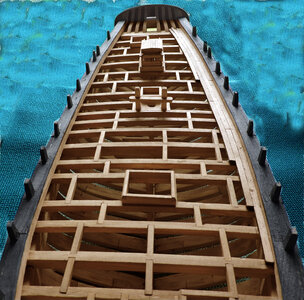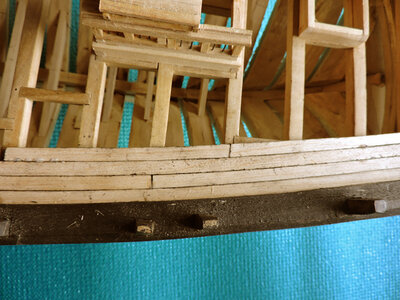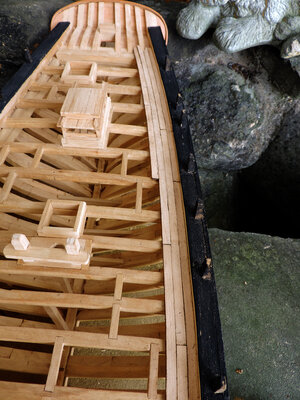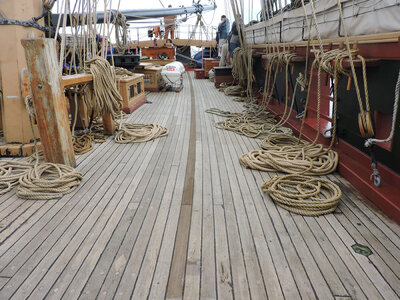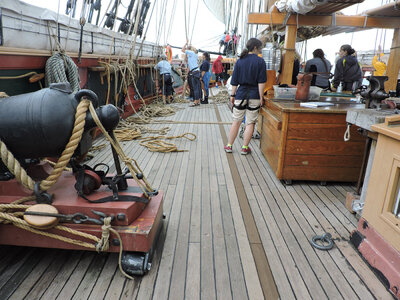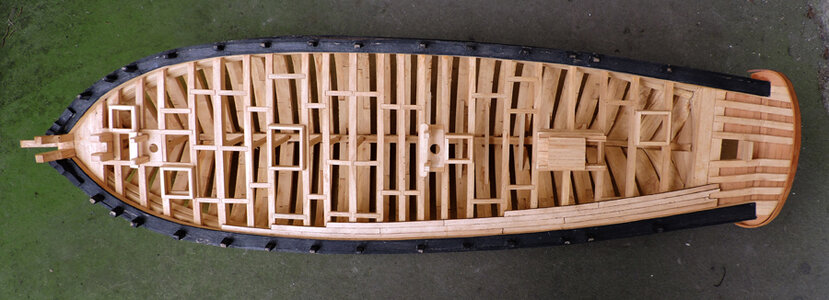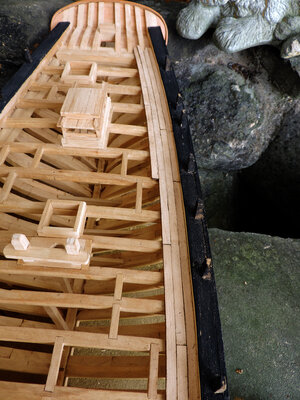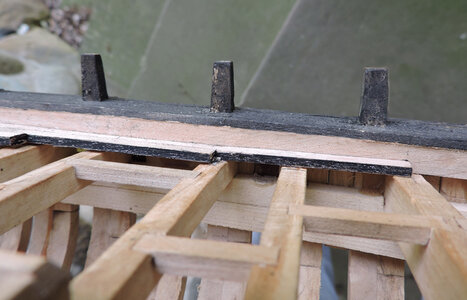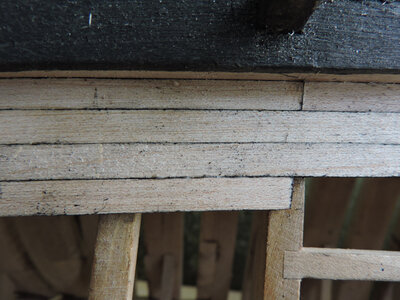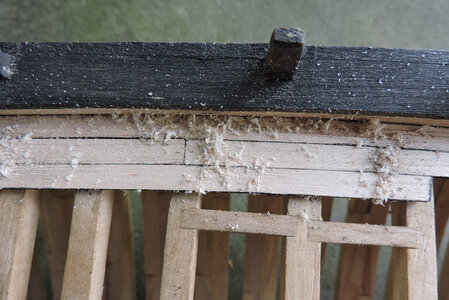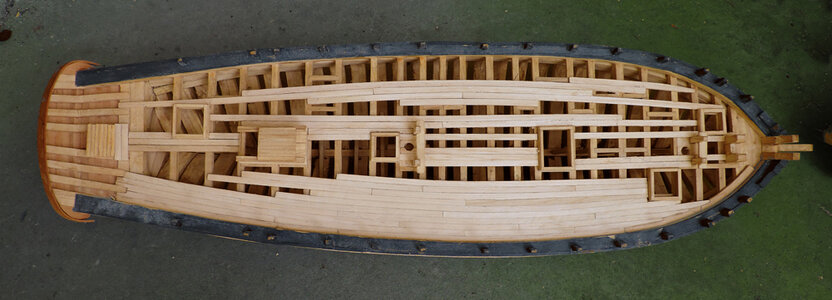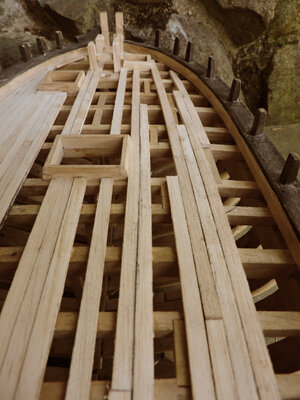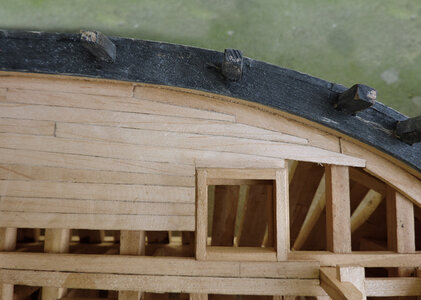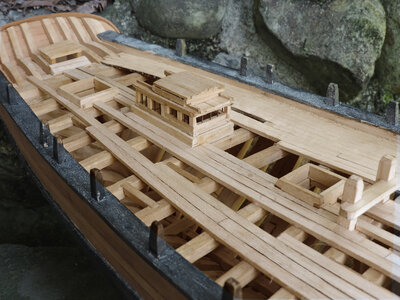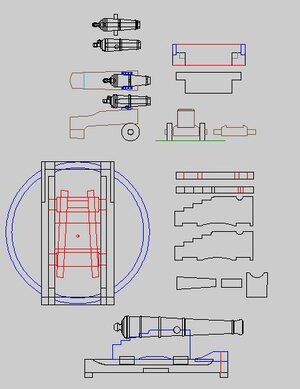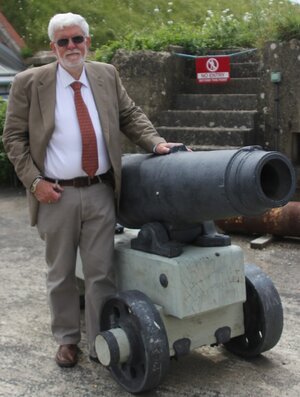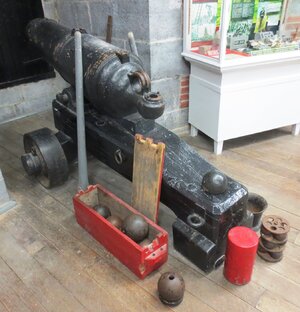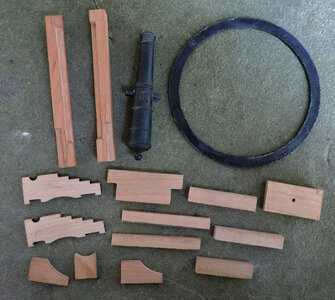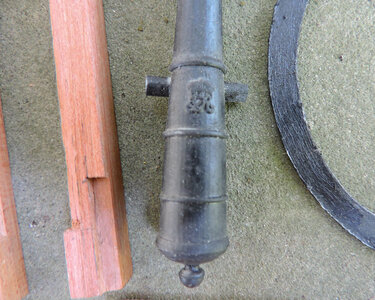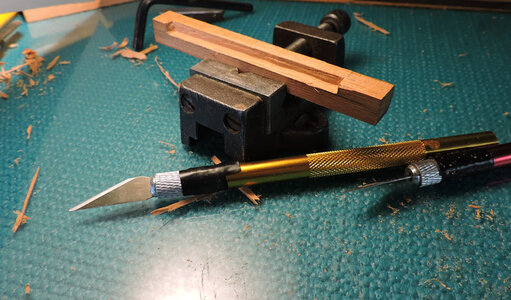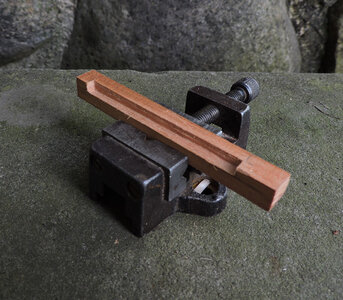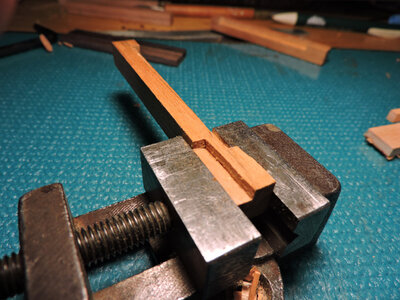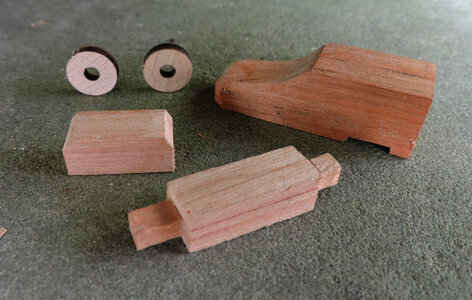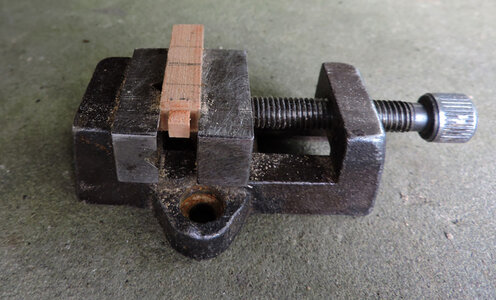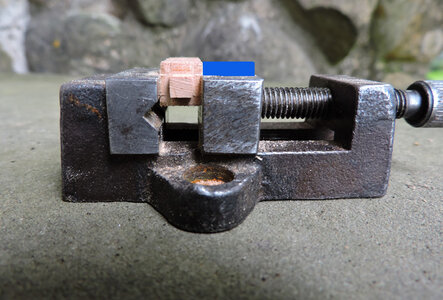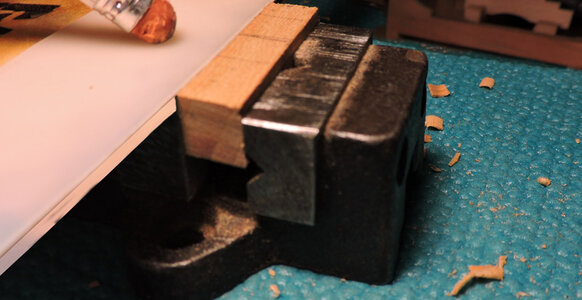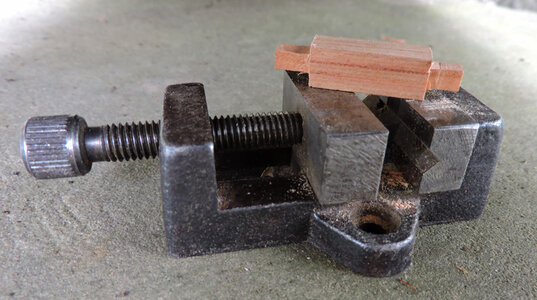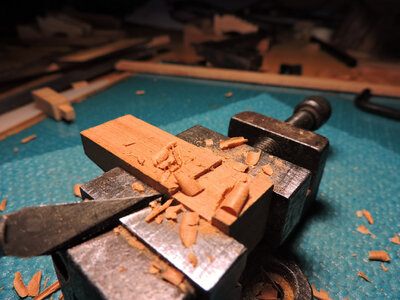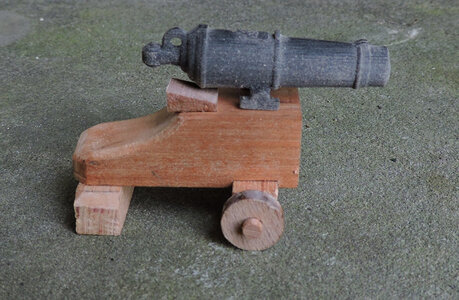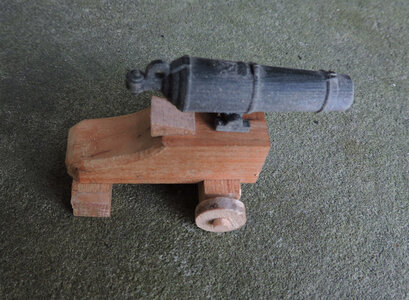i did plank a section that will go under one of the guns to the right. also i wanted to show the curving of the deck planks
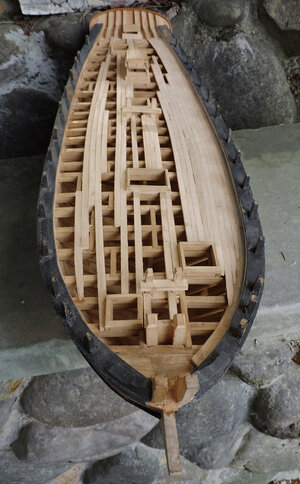
Just about all the models you see have a straight run of deck planks. In the case of the Tecumseth the deck planks run on a curve to match the shape of the hull. When you talk to model ship builders about bending planks edgewise they will tell you it is difficult because planks tend to buckle. In some cases deck planks are not what you get in a kit, In kits the planks are thin and wide which indeed makes them difficult to bend edgewise. In reality deck planks are not thin wide "planks" they are almost as thick as they are wide making them more like a beam and not a plank.
Notice peoples shoes they are as long as 3 planks so if the average shoe of an adult is from 10 to 12 inches divide that by 3 a plank is from 3 1/2 to 4 inches and the thickness of decks are 2 1/2 to 3 inches. This makes them easy to bend.
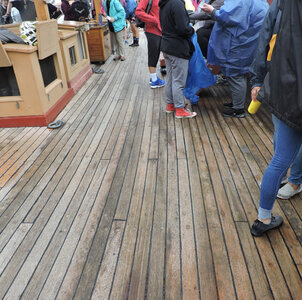
another thing to consider is the tear drop shape of the hull there is no section that is close to being straight like the Alvin Clark. This means either all the planks for and aft will end in a point or they have to be nibbed into a margin plank.

The study of the Tecumseth and Newash states there was no indication of deck knees used. In ship building lodging knees were installed along the side of the hull.
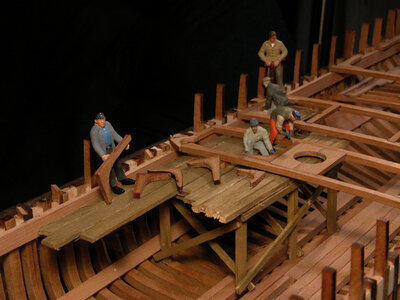
What this does is to give a solid band of wood along the side of the deck.
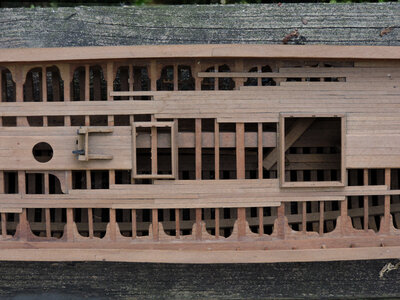
in the case of the Tecumseth there is no structural support along the side, it is hollow. deck beams are set between the deck clamp below and the waterway above. If you were to run the deck planking straight odds of the nibbed end of every plank landing on a beam is slim, so you end up with the ends floating in air with no support. running planking curved along the side of the ship eliminates this problem.
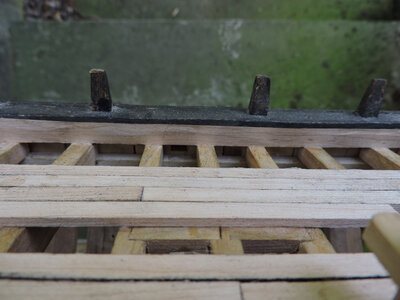
At some point in laying the deck you do have to compensate for the curve and adjust the planks to fit. Down the center of the deck you have a number of things to work around like hatches, posts, companionways etc. so you have to cut and fit planks might as well make the curve adjustments in this area. Here are some ways this was done.

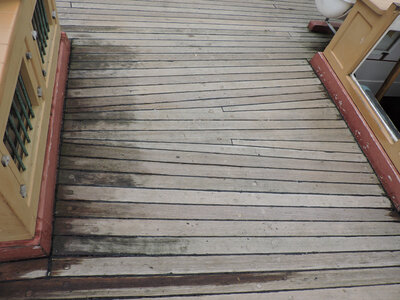
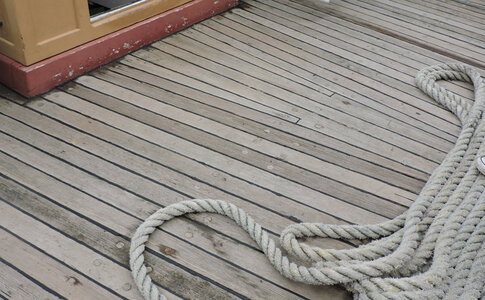
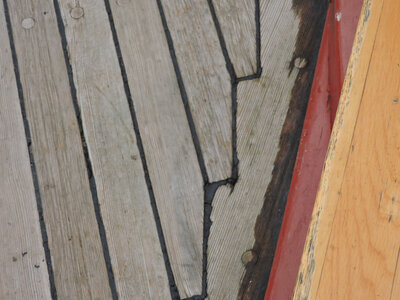
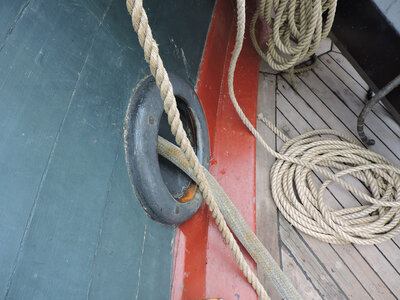
This ends the planking of the deck and now moving on to the guns
